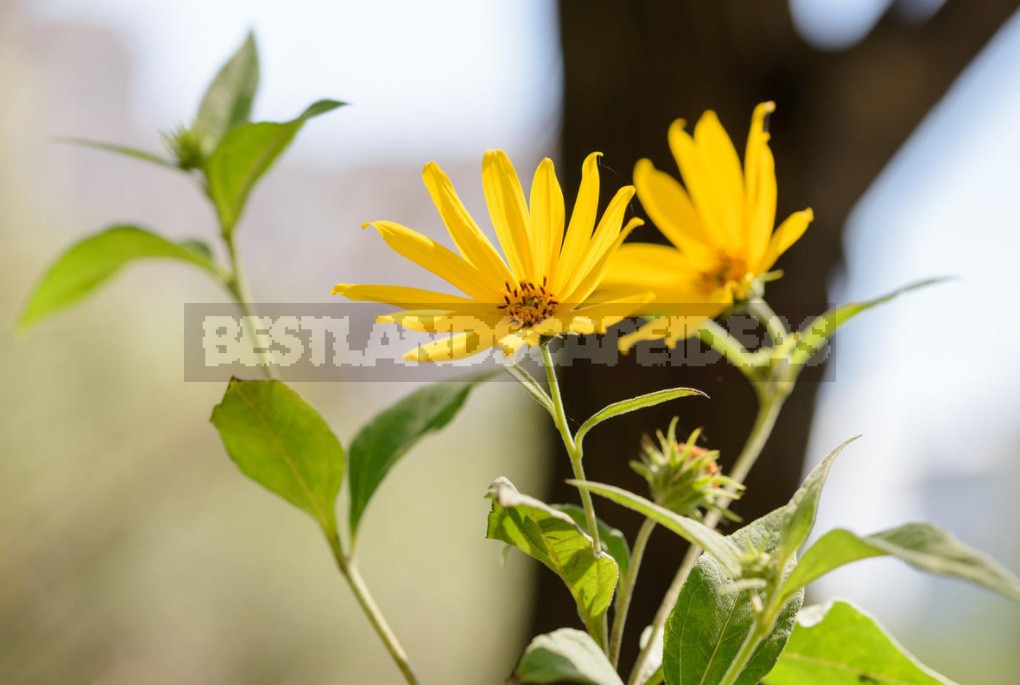
How to grow Jerusalem artichoke
This plant is fantastically unpretentious and can grow without any care at all. But if we expect to get a decent harvest, we must at least initially create favorable conditions.
It is ideal to plant Jerusalem artichoke on light fertile loams; it is very responsive to the application of organic fertilizers, on poor soils for the formation of good, large tubers, it is recommended to feed it every 2-3 weeks with a solution of chicken manure or mullein. A great option is to plant Jerusalem artichoke near a compost heap: it will mask the unsightly structure and feed itself.
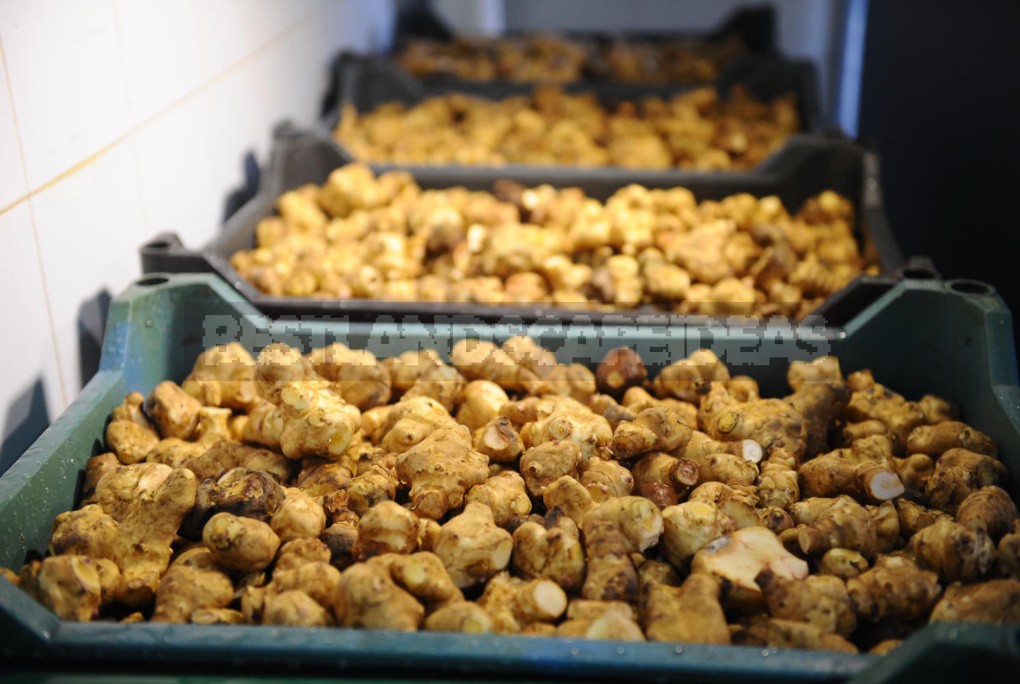
By the way, here is an interesting point: most sources clearly indicate that Jerusalem artichoke does not accumulate nitrates and heavy metal salts and can be used, among other things, for soil reclamation in technogenically disturbed areas — with simultaneous use of tubers and aboveground parts as food or feed products. However, there are also directly opposite statements: Jerusalem artichoke can not be planted near landfills, latrines, and even compost heaps — because the tubers accumulate all sorts of chemical compounds.
Who to trust? I still tend to trust professionals who adhere to the first point of view. I assume (I may be mistaken) that proponents of the second position mistakenly interpret the ability of Jerusalem artichoke to bind and remove heavy metals and radionuclides from the body. It would be interesting to hear the opinions of people versed in biochemistry to clarify this point.
They plant Jerusalem artichoke like potatoes. According to the rules, it is recommended to hoe it — to increase its resistance to lodging. To be honest, I first learned about it from books quite recently — and I was very surprised: I have it growing without hoeing, it grows up to 2 meters in height, but I have never seen it try to lie down and demand a garter.
Like potatoes, Jerusalem artichoke loves moisture and especially needs it during the formation of tubers. If there is a drought, the harvest will be poor. But if the moisture is in excess-there will be rot, planting can die. It is better to choose an open, Sunny place, although in partial shade the ground pear will grow. I have a Cottonwood Bush growing every year among the Apple and plum trees in my garden, and it feels just as good as the ones in the field. But, again, for the sake of a good harvest, you should take care to create the most favorable conditions for the plant.
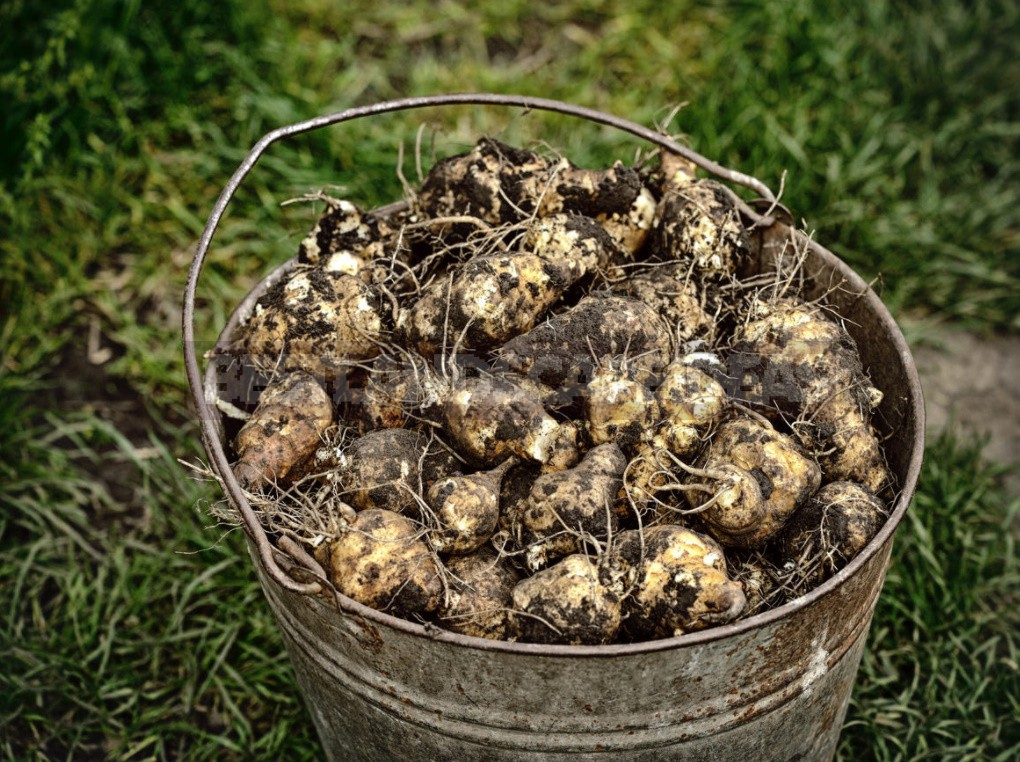
It is better to plant in the fall-simply because it is quite difficult to preserve the planting material until spring, and Jerusalem artichoke winters perfectly in the soil. He wakes up early — by the time the potatoes are planted, his green sprouts are already showing out of the ground.So, if you still prefer spring planting, you need to do it in April (if we talk about the conditions of the middle lane).
You can do it easier: do not dig up the tubers completely, leave part of the crop in the ground — and year by year the “plantation” will grow. By the way, in early spring, when the soil is just thawing, you can go back to the garden with a shovel — overwintered tubers are no worse than those that are dug up in the fall, they completely retain their useful properties and nutritional value. In the spring, when the supply of fresh vegetables has already run out, this is a real find.
An important detail: rodents can “help” a lot with harvesting. In the spring, the area where the tubers remained in the soil is completely pitted, and the tubers themselves can no longer be found.
How to harvest and use Jerusalem artichoke
Well, well, you say, we have grown this miracle plant — and what to do with it next? How to use all its useful properties, how to stock it for the winter?
The easiest way to use leaves is to collect and dry them, and then prepare decoctions for compresses and baths for diseases of the joints and spine, for rinsing hair or skin care. They can even be brewed as tea — it will be both useful and delicious. As for tubers, the beauty of this product is that to get the result, you do not need to make any complex decoctions or infusions, strictly maintaining the recipe. Just include Jerusalem artichoke in your diet — especially since no contraindications to its use have been established, and the benefits are unconditional.

This vegetable is especially useful (raw or processed) for diabetes, pancreatitis, urolithiasis, hypertension, atherosclerosis, obesity, dysbacteriosis, and chronic constipation.
The method of preparing tubers is a matter of taste. It is most useful, of course, to use them raw (the skin can not be cleaned, wash thoroughly enough, it is better with a brush to remove soil particles from all the “folds”). But you can also boil the tubers, frying, stewing, salting or drying.
And I, for example, most like this vegetable in all sorts of salads — with carrots, apples, eggs, herbs, etc. I don’t bother with recipes — I just use what is at hand.
I would describe the taste of Jerusalem artichoke tubers as neutral, with light nutty notes — it goes well with other products, so there are no problems with the selection of combinations.
But it’s all good when the crop is just dug up. In theory, you can keep the tubers fresh — like carrots, for example, which need about the same conditions as Jerusalem artichoke tubers. However, in practice, I personally do not manage to create such conditions: the basement is too warm and dry, the refrigerator is too wet…
Well-washed tubers in the vegetable compartment of the refrigerator, in principle, can be stored-but this process should be kept under control. And the easiest way to prepare Jerusalem artichoke in dried form.

Do you know Jerusalem artichoke? Do you grow it on your site? Maybe there are some readers who will share their impressions about certain varieties?
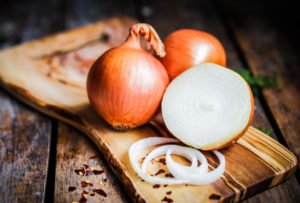


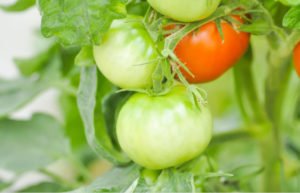
Leave a Reply